#thoughtco
Text
Saturday Surprise -- Animal Myths
Saturday Surprise — Animal Myths
Good morning and welcome to the weekend! In all honesty, I almost took a pass on Saturday Surprise this week, for I really wasn’t in the mood for light-hearted or humorous. But then, I came across this post I did just over four years ago back in 2018, and thought this a perfect time to redux it! The topic, of course, is animals, but not just cute little animals. Today we shall look into some…

View On WordPress
1 note
·
View note
Text
MEULIN: ~(=^‥^)ノ < IS KILLING A PURRAYING MANTIS ILLEGAL?
KANKRI: Killing a praying mantis is n9t illegal, 6ut given the mystique surr9unding the insect, it might 6e a sin.
#source: debbie hadley on thoughtco#<- i went and looked it up there is legitimatly an entire article written about this actually#homestuck#incorrect homestuck quotes#incorrect quotes#mod dave#meulin leijon#kankri vantas
115 notes
·
View notes
Text

Day 253 of posting pictures of elephants.
What poise! What style! What elegance!
#elephants#cute animals#cuteness#elephant#adorable#image of the day#not my image#wildlife#cuteness overload#nature#source: ThoughtCo
49 notes
·
View notes
Text
“Many of the women in Heterodoxy moved in corresponding circles and maintained similar beliefs. They were “veterans of social reform efforts,” writes Scutts in Hotbed, and they belonged to “leagues, associations, societies and organizations of all stripes.” A large number were public figures—influential lawyers, journalists, playwrights or physicians, some of whom were the only women in their fields—and often had their names in the papers for the work they were performing. Many members were also involved in a wide variety of women’s rights issues, from promoting the use of birth control to advocating for immigrant mothers.
Heterodoxy met every other Saturday to discuss such issues and see how members might collaborate and cultivate networks of reform. Gatherings were considered a safe space for women to talk, exchange ideas and take action.”
In the early 20th century, New York City’s Greenwich Village earned a reputation as America’s bohemia, a neighborhood where everyone from artists and poets to activists and organizers came to pursue their dreams.
“In the Village, it was so easy to bump into great minds, to go from one restaurant to another, to a meeting house, to work for a meeting or to a gallery,” says Joanna Scutts, author of Hotbed: Bohemian Greenwich Village and the Secret Club That Sparked Modern Feminism. Here was a community where rents were still affordable, creative individuality thrived, urban diversity and radical experiments were the norm, and bohemian dissenters could come and go as they pleased.
Such a neighborhood was the ideal breeding ground for Heterodoxy, a secret society that paved the way for modern feminism. The female debating club’s name referred to the many unorthodox women among its members. These individuals “questioned forms of orthodoxy in culture, in politics, in philosophy—and in sexuality,” noted ThoughtCo. in 2017.
Born as part of the initial wave of modern feminism that emerged during the 19th and early 20th centuries with suffrage at its center, the radical ideologies debated at Heterodoxy gatherings extended well beyond the scope of a women’s right to vote. In fact, Heterodoxy had only one requirement for membership: that a woman “not be orthodox in her opinion.”
“The Heterodoxy club and the work that it did was very much interconnected with what was going on in the neighborhood,” says Andrew Berman, executive director of Village Preservation, a nonprofit dedicated to documenting and preserving the distinct heritage of Greenwich Village. “With the suffrage movement already beginning to crest, women had started considering how they could free themselves from the generations and generations of structures that had been placed upon them.”
Unitarian minister Marie Jenney Howe founded Heterodoxy in 1912, two years after she and her husband, progressive reformer Frederic C. Howe, moved to the Village. “Howe was already in her 40s,” says Scutts, “and just got to know people through her husband’s professional connections, and during meetings and networks where progressive groups were very active at the time.”
Howe’s mindset on feminism was clear: “We intend simply to be ourselves,” she once said, “not just our little female selves, but our whole big human selves.”
Many of the women in Heterodoxy moved in corresponding circles and maintained similar beliefs. They were “veterans of social reform efforts,” writes Scutts in Hotbed, and they belonged to “leagues, associations, societies and organizations of all stripes.” A large number were public figures—influential lawyers, journalists, playwrights or physicians, some of whom were the only women in their fields—and often had their names in the papers for the work they were performing. Many members were also involved in a wide variety of women’s rights issues, from promoting the use of birth control to advocating for immigrant mothers.
Heterodoxy met every other Saturday to discuss such issues and see how members might collaborate and cultivate networks of reform. Gatherings were considered a safe space for women to talk, exchange ideas and take action. Jessica Campbell, a visual artist whose exhibition on Heterodoxy is currently on display at Philadelphia’s Fabric Workshop and Museum, says, “Their meetings were taking place without any kind of recording or public record. It was this privacy that allowed the women to speak freely.”
Scutts adds, “The freedom to disagree was very important to them.”
With 25 charter members, Heterodoxy included individuals of diverse backgrounds, including lesbian and bisexual women, labor radicals and socialites, and artists and nurses. Meetings were often held in the basement of Polly’s, a MacDougal Street hangout established by anarchist Polly Holladay. Here, at what Berman calls a “sort of nexus for progressive, artistic, intellectual and political thought,” the women would gather at wooden tables to discuss issues like fair employment and fair wages, reproductive rights, and the antiwar movement. The meetings often went on for hours, with each typically revolving around a specific subject determined in advance.
Reflecting on these get-togethers later in life, memoirist Mabel Dodge Luhan described them as gatherings of “fine, daring, rather joyous and independent women, … women who did things and did them openly.”
Occasionally, Heterodoxy hosted guest speakers, like modern birth control pioneer Margaret Sanger, who later became president of the International Planned Parenthood Federation, and anarchist Emma Goldman, known for championing everything from free love to the right of labor to organize.
While the topics discussed at each meeting remained confidential, many of Heterodoxy’s members were quite open about their involvement with the club. “Before I’d even heard of Heterodoxy,” says Scutts, “I had been working in the New-York Historical Society, researching for an [exhibition on] how radical politics had influenced a branch of the suffrage movement. That’s when I began noticing many of the same women’s names in overlapping causes. I then realized that they were all associated with this particular club.”
These women included labor lawyer, suffragist, socialist and journalist Crystal Eastman, who in 1920 co-founded the American Civil Liberties Union to defend the rights of all people nationwide, and playwright Susan Glaspell, a key player in the development of modern American theater.
Other notable alumni were feminist icon Charlotte Perkins Gilman, whose 1892 short story, “The Yellow Wallpaper,” illustrates the mental and physical struggles associated with postpartum depression, and feminist psychoanalyst Beatrice M. Hinkle, the first woman physician in the United States to hold a public health position. Lou Rogers, the suffrage cartoonist whose work was used as a basis for the design of Wonder Woman, was a member of Heterodoxy, as was Jewish socialist activist Rose Pastor Stokes.
Grace Nail Johnson, an advocate for civil rights and an influential figure in the Harlem Renaissance, was Heterodoxy’s only Black member. Howe “had personally written to and invited her,” says Scutts, “as sort of a representation of her race. It’s an unusual case, because racial integration was quite uncommon at the time.”
While exceptions did exist, the majority of Heterodoxy’s members were middle class or wealthy, and the bulk of them had obtained undergraduate degrees—still very much a rarity for women in the early 20th century. Some even held graduate degrees in fields like medicine, law and the social sciences. These were women with the leisure time to participate in political causes, says Scutts, and who could afford to take risks, both literally and figuratively. But while political activism and the ability to discuss topics overtly were both part of Heterodoxy’s overall ethos, most of its members were decidedly left-leaning, and almost all were radical in their ideologies. “Even if the meetings promoted an openness to disagree,” says Scutts, “it wasn’t like these were women from across the political spectrum.”
Rather, they were women who inspired and spurred each other on. For example, about one-third of the club’s members were divorced—a process that was still “incredibly difficult, expensive and even scandalous” at the time, says Scutts. The club acted as somewhat of a support network for them, “just by the virtue of having people around you that are saying, ‘I’ve gone through the process. You can, too, and survive.’”
According to Campbell, Heterodoxy’s new inductees were often asked to share a story about their upbringing with the club’s other members. This approach “helped to break down barriers that might otherwise be there due to their ranging political views and professional allegiances,” the artist says.
The Heterodoxy club usually went on hiatus during the summer months, when members relocated to places like Provincetown, Massachusetts, a seasonal outpost for Greenwich Village residents. As the years progressed, meetings eventually moved to Tuesdays, and the club began changing shape, becoming less radical in tandem with the Village’s own shifting energy. Women secured the right to vote with the ratification of the 19th Amendment in 1920, displacing the momentum that fueled the suffrage movement; around this same time, the Red Scare saw the arrests and deportations of unionists and immigrants. Rent prices in the neighborhood also increased dramatically, driving out the Village’s bohemian spirit. As the club’s core members continued aging, Heterodoxy became more about continuing friendships than debating radical ideologies.
“These women were not all young when they started to meet,” says Scutts in the “Lost Ladies of Lit” podcast. “You know, it’s 20, 30 years later, and so they stayed in touch, but they never really found the second generation or third generation to keep it going in a new form.”
By the early 1940s, the biweekly meetings of Heterodoxy were no more. Still, the club’s legacy lives on, even beyond the scope of modern feminism.
“These days, it’s so easy to dehumanize people when you’re only hearing one facet of their belief system,” says Campbell. “But the ability to change your mind and debate freely like the women of Heterodoxy, without any public record? It’s an interesting model for rethinking the way we talk about problems and interact with other people today.”
82 notes
·
View notes
Text
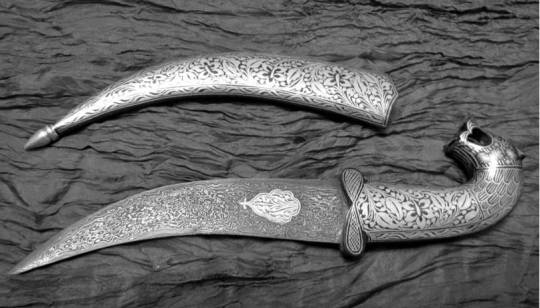
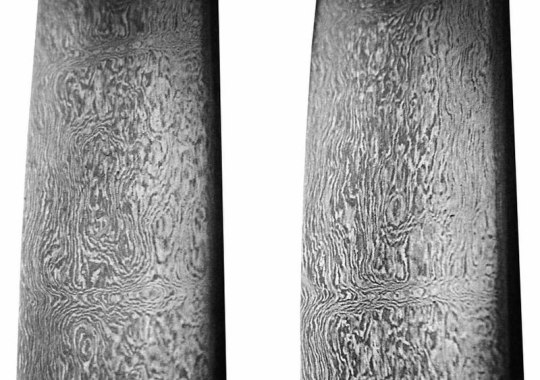

Alloys: Wootz Steel
A high-carbon crucible steel, the history of wootz steel dates back to over 2,000 years ago in the south of India. Though the exact timeline of this alloys invention is unknown, historical records suggest it existed as early as 300-500 BCE. The word wootz is an anglicized version of ukku or urukku, what the steel was known as by the locals in the Dravidian languages.
Wootz steel is characterized by a banded microstructure. Higher carbon varieties contain carbides in a martensitic or pearlitic structure, while lower carbon varieties contain ferrite and pearlite bands (because of its age, there is no set composition for wootz steel). Distinct patterns known as wave, ladder, and rose patterns can be created based on processing. Damascus steel, meanwhile, is merely wootz steel that has been forged into sword blades, and acquired its name from wootz steel that was imported to the city of Damascus before being further processed.
India maintained secrecy around the production of wootz steel for centuries, and thus managed to maintain their status as the primary producer until the 19th century, when Europeans began to produce it as well. The crucible process used to create it involves heating the iron for several days in a clay crucible before slow cooling.
Sources/Further Reading: (Images 1 and 3 - Ancient Origins) (Image 2 - Wikipedia) (ThoughtCo.) (Noblie) (Indian Institute of Science) (Matthew Forde Military Antiques) (Ancient Science) (National Institute of Advanced Studies, Bangalore)
22 notes
·
View notes
Text

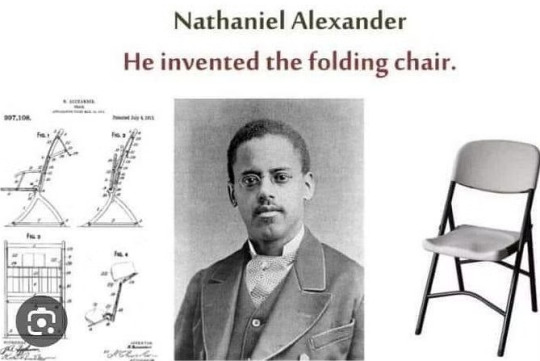
Did Nathaniel Alexander invent the folding chair? Nathaniel Alexander Inventor of a Folding Chair - ThoughtCo
On July 7 1911 an African-American man named Nathaniel Alexander of Lynchburg Virginia patented a folding chair. According to his patent Nathaniel Alexander designed his chair to be used in schools churches and other auditoriums. His design included a book rest that was usable for the person sitting in the seat behind and was ideal for church or choir use.
Fast Facts: Nathaniel Alexander
Known For: African-American patent holder for a folding chair
Born: Unknown
Parents: Unknown
Died: Unknown
Published Works: Patent 997,108, filed March 10, 1911, and granted July 4 the same year
Patent 997108 is the only invention on record for Nathaniel Alexander, but on March 10, 1911, his application was witnessed by two people: James R.L. Diggs and C.A. Lindsay. James R.L. Diggs was a Baptist minister from Baltimore (born in 1865), who was a member of the Niagara Movement, and holder of an MA from Bucknell University and a PhD in Sociology from Illinois Wasleyan in 1906.
in fact, Diggs was the first African-American to hold a Sociology Ph.D. in the United States. The Niagara Movement was a Black civil rights movement led by W.E.B. DuBois and William Monroe Trotter, who assembled in Niagara Falls, Ontario (American hotels barred Blacks), to discuss Jim Crow laws following the Reconstruction.
Folding chairs allow the space to be used for other purposes when there is not a class or church service.







LET THE GOOD TIMES ROLL



OUR ANCESTORS ARE SAYING " NOW THAT IS A NEW MEANING TO THE SAYING HAVE A SEAT, WE SHOULD HAVE THOUGHT OF THAT"
LITTLE DID NATHANIEL ALEXANDER REALIZE IN 1911 HIS INVENTION WOULD BE USE AS A WEAPON OF MASS DESTRUCTION THAT WOULD MAKE THE ANCESTORS PROUD.

HOW IRONIC IS THIS
" ANCESTRAL BEAT DOWN" TOOK PLACE AT THE MONTGOMERY DOCKS IN ALABAMA - THE RIVERBOAT IS CALL THE HARRIOTT AND THE DOCK WAS A SLAVE TRADING PORT.
The Harriott was a slave ship back in the 1700s. From 1798 to 1805, it carried thousands of slaves to Barbados and then back to Liverpool. However, it was owned by Barton & Co and also cruised between Liverpool and Africa. It now serves as a relaxing cruise and is one of Montgomery's tourist attractions.
SO ALL THE ANCESTOR ARE STANDING SMILING PROUD
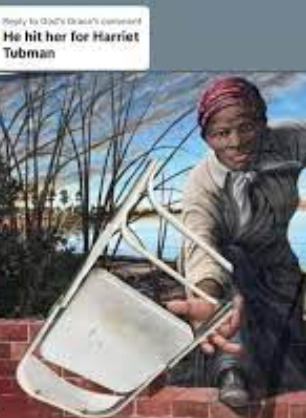

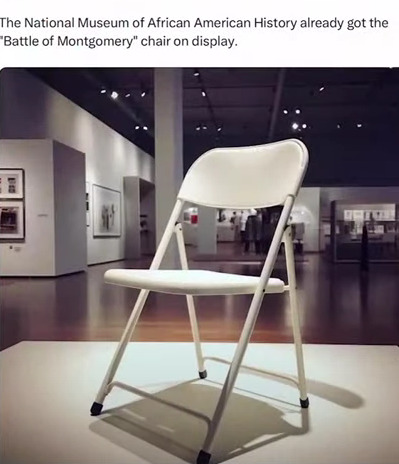
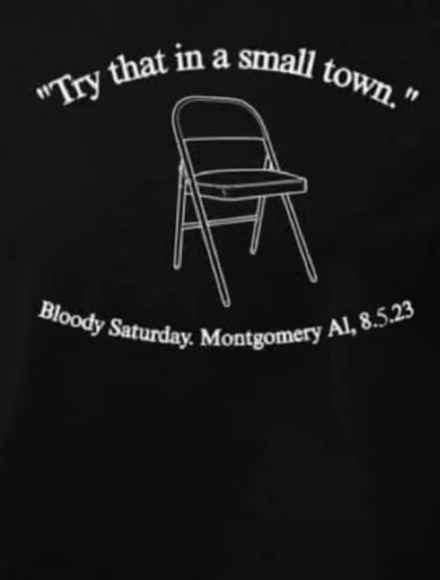
AT BLACK PARAPHERNALIA BLOG WE DO NOT BELIEVE IN ANY FORM OF VIOLENCE OR PERPETUATE THE BEHAVIOR OF WHAT WAS NOTED.
WE HAVE ENDURED AND SUFFERED FOR CENTURIES OF THE WS AND THEM ENTITLE MANNERISM, AGGRESSIONS, BEHAVIORS AND VIOLENT RACISM.
THIS IS A NEW ERA IN THIS 21TH CENTURY WE SAY NO MORE - WE ARE SICK AND TIRED, ENOUGH IS ENOUGH AND WILL NOT TOLERATED ANY SUCH BEHAVIORS, NOT TODAY SATAN.
MOREOVER, IT IS OUR BELIEF THAT WE SHOULD AND MUST DEFEND AND PROTECT ONESELF...... LIKE IN THE WORDS OF OUR ANCESTOR MALCOLM X *BP*
BY ANY MEANS NECESSARY
youtube
youtube

ALL VIDEOS ARE UNDER THE FAIR USE ACT AS LISTED ABOVE
BLACK PARAPHERNALIA DISCLAIMER - PLEASE READ
#black paraphernalia#this is america#THIS IS A SMALL TOWN#FOLDING CHAIR#nathaniel alexander#MAKING THE ANCESTORS PROUD#by any means necessary
20 notes
·
View notes
Text
FOR WANT OF A NAIL
@baldwin-montclair @adowobsessed @sylverdeclermont @nicki-mac-me @thereadersmuse @kynthiamoon @wheresthesunshinesblog @adowbaldwin @beautifulsoulsublime @lady-lazarus-declermont @adarafaelbarba-blog @dogblessyoutascha
Part Fourty-Five
Summary: Baldwin Montclair had a string of ex girlfriends, a single child, and a lifetime longer than most people could dream of to make all kinds of mistakes. His family knew one which kept coming out of the woodwork to irritate him every other century
Also on AO3
It took the time between steps for Martin's world to change again.
He had been out for an evening stroll through Chalon and had gone down to the river to hunt. No fishermen had chanced the moonless night to throw a line, so Martin had decided to try his luck elsewhere.
He took a step and raised his foot to take another.
A piercing wail rose from beneath the bridge.
A baby.
Another cry rose up.
Martin vaulted over the bridge and landed, cat-like, in the mud. The tiny bundle at his feet was wriggling; slow movements, but not sluggish, and definately distressed.
Martin sniffed. Faeces, tears, urine and mud. Poor babe.
The damp had soaked partway through the blankets; Martin wiped the excess away and rocked the child, peering down into a tiny pink face scrunched up and screaming. The only thing that had saved it was that the rain-swollen river had gone down a few metres, exposing the riverbank.
Martin ran a finger along the baby's face and winced.
'Too cold..far too cold. We shall have you before a fire soon, young one.'
The baby whined and gurgled, opening a pair of beautiful blue eyes.
'...Hello.' Martin breathed.
The child gave him a truly impressive glare, kicked furiously and screamed.
Martin felt the world fall away.
________________________________________________________________
Sister Isabella nearly jumped out of her skin when a volley of knocks hammered on the door beside the infirmary.
'Peace! Peace!' she admonished, rushing to unlock it. 'You will break it down-'
Screams deafened her. The young man, handsomely dressed and covered in mud, was cradling a tiny baby wrapped in his cloak and a bundle of wet blankets.
'She needs feeding,' the man pleaded, clearly desperately out of his depth.
'Give her to me!' Sister Isabella took the baby from him and rang her hand bell. Sister Rosaline, sleeping in a cot in the hospital on the other side of the corridor, jerked awake and came running.
'Feed the babe! I will fetch her clean swaddling.' Isabella passed the child to a nodding Rosaline who adjusted her gown and cradled the baby against her chest, who quieted immediately.
The young man disappeared into the courtyard and came back carrying a full bucket of water. He disappeared and returned again, and before long there was a hot bath steaming away in the corner, which Isabella had forced the young man to sit in while he cradled the baby and she poured water over her shivering form.
Once she had stopped shivering, and she was clean of river mud, Rosaline fetched a cradle from a store room and they lay the little girl down to rest. She fell asleep as soon as her head hit the pillow, snuffling once and twitching, before falling still.
'What is her name?'
'Yvette.'
The man looked startled. He took a moment, swallowed, and looked down at the sleeping child.
'Her..' the man paused, staring.
Isabella and Rosaline shared a knowing look.
'My daughter is called Yvette.'
Author's Notes
BABIES NEED BREAST MILK OR FORMULA!! Goat milk can cause dehydration, malnutrition from lack of protein, kidney and organ damage and an allergic reaction. Cow milk can cause intestional bleeding in infants under twelve months old.
In cultures such as England in the High Middle Ages, babies were often swaddled, theoretically to help their arms and legs grow straight. Swaddling involved wrapping the infant in linen strips with his legs together and his arms close to his body. (ThoughtCo)
A woman can only act as a wet nurse if she is lactating (producing milk). It was once believed that a wet nurse must have recently undergone childbirth in order to lactate. This is not necessarily the case, as regular breast stimulation can elicit lactation via a neural reflex of prolactin production and secretion. (Wikipedia)
#baldwin montclair#baldwin de clermont#a discovery of witches#adow#all souls trilogy#all souls series#all souls tv series#a discovery of witches season 1#a discovery of witches season 2#a discovery of witches season 3#bibaldwin#baldwin de clermont/male oc
4 notes
·
View notes
Text

Animal:
-Tortoises live on all continents except for Australia and Antarctica. (Britannica)
-A tortoise’s she’ll is not one single component. It is made up of 60 individual bones. (TheFactLife)
-A group of tortoises is called a “creep”. (PetKeen)
-Depending on the species, tortoises lay anywhere from 20-200 eggs at a time. (ThoughtCo)
-Tortoises have a life span of 30-50 years, but some can live to be over 80 years old. (Nature)
Consumerist/Technological:
-Chandeliers we’re originally wooden devices used to hold candles during the Middle Ages. Though, the function has changed, the name “chandelier” still holds its charm. (Explosion)
-Black tea contains 47 mg of caffeine per cup whereas green tea contains roughly 29 mg per cup. There is a significant caffeine difference depending on the type of tea it is. (EatThis)
-The first lamp was invented around 70,000 BC. It was a Rock filled with moss that was soaked with animal fat. It is said to have absorbed the suns light. (ThoughtCo)
-Ancient Egyptians, Jews and Romans all employed some sort of stone or brick oven fired with wood to bake. Baking dates way back. (Smithsonian)
-Chocolate Chip cookie were invented in the 1930s by Ruth Wakefield, who ran TollHouse. (Buzz feed)
HOMEWORK PROMPT;
“It is believed that people first began dyeing cloth sometime between the sixth and fourth millennia B.C. Most of the scraps of dyed cloth that date from this time until the Roman era were colored a shade of red.” Page 139.
I find this quote interesting. It is crazy to me that Romans loved dying their clothes red. I usually associate red to important people, and I feel like this is how ancient Romans viewed it as well. It is a very bold color.
2 notes
·
View notes
Text
Saturday Surprise -- Birds, Birds, Birds
Saturday Surprise — Birds, Birds, Birds
Hey friends!!! It’s finally the weekend and I bet you all have some really fun things planned, yes? Me? I’ll be staying in where it’s cool and where I can breathe, for the heat + humidity + mask = unbearable. I’ve been a bit under the weather today and am way behind on everything, so I hope you can forgive me for yet another Saturday Surprise redux — this one from 2018.
I get daily emails…

View On WordPress
0 notes
Text
The Renaissance
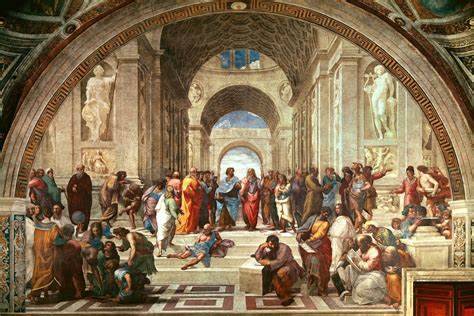
The renaissance was a cultural revolution which started in Italy in the early 15th century, which acted as a bridge between the middle ages and the modern era.
As said on www.britannica.co.uk, it was a “march of modernity and progress”, which came with a new awareness and an awakened interest in the material and natural world.
The renaissance had a massive effect on many things, e.g. humanist philosophy, astronomy, world exploration, painting and sculpture techniques, and architecture, etc. The effect on architecture shows a visible change in designs. The use of symmetry and more proportionate designs projected a sense of order and stability which indicated the new era.
Before the Renaissance Europe was dominated by buildings of Gothic Architecture. During the renaissance the awareness of humanism increased which led to a change in society as well as architectural designs. This change developed the importance of individualism. This new need of individualism and humanism led to a further attention to detail, especially within art and design.
During the renaissance there was a young architect by the name Filippo Brunelleschi. According to ItalianRenaissanceArt.com, Filippo led a group of young Italian renaissance artists who were all “intent on creating new art and to break with the ideas of the past”. In 1419 Filippo was tasked with designing the largest dome in the world. This led to the design of ‘The Dome of Florence Cathedral’. The dome retained parts of the old gothic architecture style by including gothic pointed arches. The design was further inspired by the great domes of ancient Rome, e.g. the Pantheon.
The renaissance allowed major progress of modernism within art, architecture and design. However, it also played a massive part in the awareness of important issues in society, e.g. humanism and individualism. As said on www.worldhistory.org the renaissance humanism led to an “intellectual movement which focused not on religion but on what it is to be human”. This caused quite a jump from myths and legends to the leaders of the present and was a huge part in how society has evolved since.
References:
Cartwright, Mark. “Renaissance Humanism.” World History Encyclopedia, 4 Nov. 2020, www.worldhistory.org/Renaissance_Humanism/.
“Filippo Brunelleschi - Dome, Artwork & Facts.” Biography, 6 Apr. 2021, www.biography.com/artists/filippo-brunelleschi.
M. A., Medieval Studies, and Medieval Studies B. A. “A Beginner’s Guide to the Renaissance.” ThoughtCo, www.thoughtco.com/guide-to-the-renaissance-1221931#:~:text=The%20Renaissance%20was%20a%20cultural%20and%20scholarly%20movement.
The Editors of Encyclopedia Britannica. “Renaissance Architecture.” Encyclopædia Britannica, 8 July 2014, www.britannica.com/art/Renaissance-architecture.
2 notes
·
View notes
Text

Day 259 of posting pictures of elephants.
#elephants#cute animals#cuteness#elephant#adorable#image of the day#not my image#wildlife#cuteness overload#nature#source: ThoughtCo
49 notes
·
View notes
Text
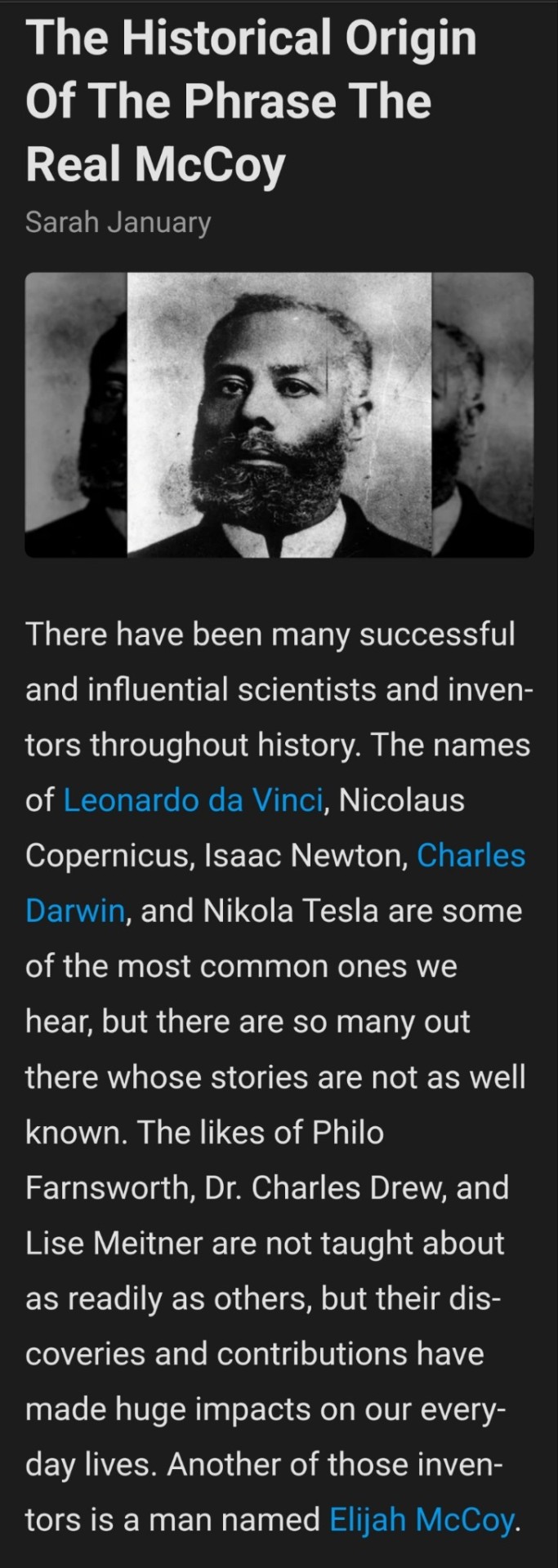
While there is a chance you might know a bit about him, you are more likely to have heard the phrase tied to his legacy. If you have ever mentioned or heard the expression referring to the "Real McCoy," this is the guy you're referencing. McCoy was a Black inventor who acquired a number of patents during his career, some of which revolutionized the way society functioned. Here's how his name became synonymous with authenticity in the world of 20th-century inventions.
Elijah McCoy was born on May 2, 1844, in Canada to parents who had escaped slavery in the United States. According to ThoughtCo, when he was 3, the McCoys returned to the United States and settled in Michigan. McCoy came from a large family, including 11 brothers and sisters, and his interest in machinery and mechanics was evident from the time he was small.
When McCoy was 15, he traveled to Edinburgh, Scotland, for an apprenticeship in mechanical engineering. Upon completing his time abroad, he returned to the United States as a certified engineer and began looking for work. Though McCoy was more than qualified, he was often overlooked for jobs that required his level of education due to the color of his skin. He was eventually able to secure a job as a locomotive fireman and oiler for the Michigan Central Railroad. Though this job was below his abilities, it turns out that it would be a significant stepping stone toward the rest of his career.
With his advanced education and natural inclination for all things mechanical, Elijah McCoy made the most of his job and Michigan Central Railroad. His job involved refueling the steam engine and maintaining the oiler, which ensured that the appropriate parts of the machine stayed properly lubricated (per ThoughtCo). The lubrication of these moving parts was especially important due to the potential of them overheating.
While working there, McCoy subsequently created some of his first inventions (per Biography). As he worked daily on the train engines, he discovered many different issues with the efficiency in which they function, especially in regard to the oiler. In response to these nagging problems, he developed his first major invention, an automatic lubricator for steam engines. He designed it to function by using the train's steam pressure to pump oil where needed, without having to stop the train. This revolutionary invention was just the start for Elijah McCoy when it came to his inventing career.
In 1872, Elijah McCoy received his first patent for an invention, which eventually became known as the "oil-drip cup," according to Smithsonian Magazine. After receiving his first patent, he continued to improve his original invention, as well as develop other devices to improve the efficiency of train maintenance. These other improvements he made allowed for trains to travel greater distances without having to stop as often (per ThoughtCo).
Elijah McCoy's oil-drip cup greatly improved the train maintenance industry, and his hard work began to pay off. The Michigan Central Railroad promoted him and asked him to instruct their employees on the use of his inventions. McCoy was also then asked to consult for the railroad on the issue of patents. Eventually, McCoy secured patents for other inventions of his, including household items like ironing boards and lawn sprinklers. Throughout his lifetime, Elijah McCoy secured almost 60 patents for his inventions, according to Biography.

The common expression "the Real McCoy" may have ties to this revolutionary inventor. When referring to something as "the Real McCoy," you are basically saying something is the real deal — a genuine artifact, not a fake copy. According to ThoughtCo, though the exact origin of the saying is unknown, there are a couple of places it may have come from.
While some believe it comes from the Scottish phrase "the Real McCay" (via The Guardian), others believe it originated when referring to the inventions of Elijah McCoy. Railroad engineers, in particular, are believed to have started using it when they were looking for the "real McCoy system," ensuring they were getting the real equipment and not an improperly made knock-off. According to Smithsonian Magazine, McCoy's oil-drip-cup design was fairly simple and easy for the competition to replicate. However, McCoy's original design had the best reputation, and therefore everyone wanted to make sure they ended up with the real deal.
19 notes
·
View notes
Text
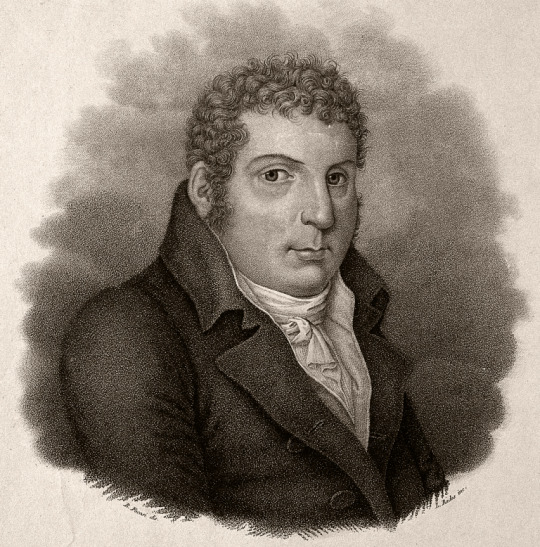
Luigi Valentino Brugnatelli (14 February 1761 – 24 October 1818)
Born in Pavia, Italy, Luigi Brugnatelli is perhaps most well known for discovering the process of electroplating: producing a metal coating by use of an electric current. Though he studied medicine, he also focused considerably on chemistry, eventually becoming a professor in the field in 1796. Several years later, he began the process of understanding electroplating, finalizing the procedure in 1805. Despite this, the process wasn't given any attention until 1839, decades after his death.
In addition to his more famous discovery, Brugnatelli also discovered many compounds and published numerous manuscripts and was a friend and contemporary to Alessandro Volta.
Sources/Further Reading: (Image source - Pavia Museum) (Wikipedia) (Gold Plating Services) (Specialty Metals) (ThoughtCo)
12 notes
·
View notes
Text
The 1980s


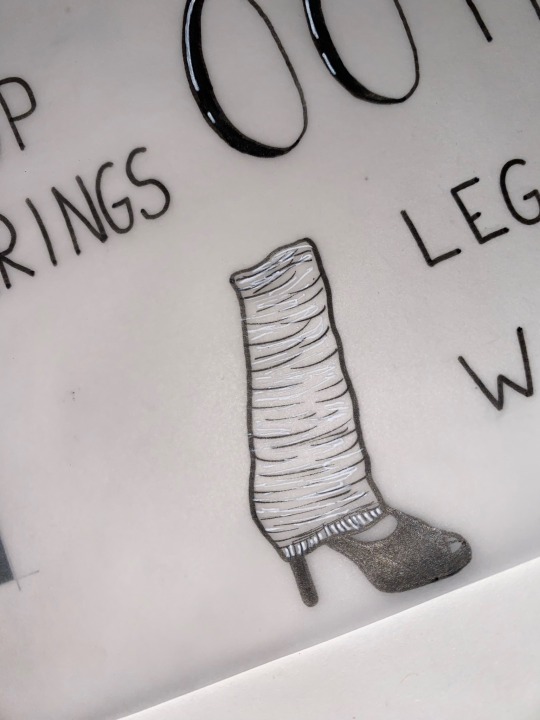
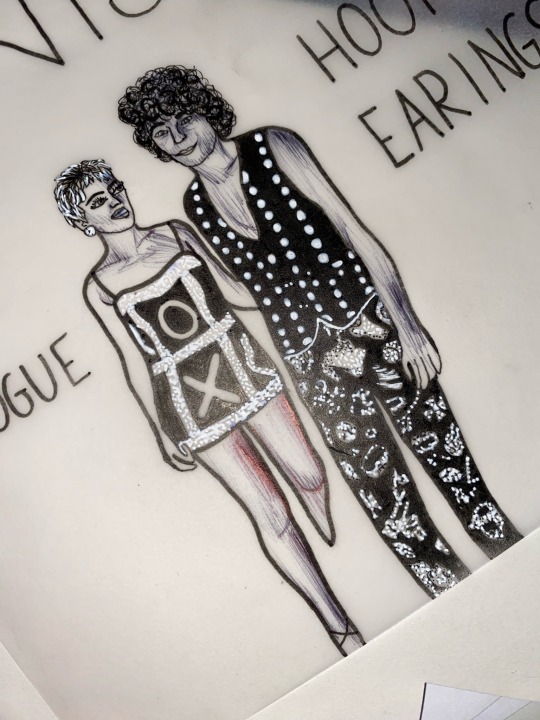
The first year of the decade was memorable for political drama, cable TV, and games people couldn't keep their hands off of. Arcades were jammed with people playing a new video game called Pac-Man.
By 1981, homes and offices were beginning to adapt to new technologies. If you had cable a TV you probably were watching, MTV after it began broadcasting in August. At work, typewriters began making way for something called a personal computer from IBM.
In 1982, Michael Jackson released his best-selling album “Thriller”. The Walt Disney (1901-1966) Company opens EPCOT Center (Experimental Prototype Community of Tomorrow), its second theme park in Florida after Walt Disney Wold.
1983 was the year that saw birth of the Internet also saw volcanic eruptions and aircraft tragedies; the first woman in space and that holiday season craze of the Cabbage Patch Kids.
The Olympics in Sarajevo, the murder of the prime minister in India and Michael Jackson moonwalking for the first time at the Pasadena Civic Auditorium are among the events that happened in 1984.
1985, the R&B single “We Are The World” written by Michael Jackson and Lionel Richie and recorded by more than 45 American singers, will go on to raise $75 million to feed people in Africa. The Coca-Cola Company introduced “New Coke”, a sweeter replacement of the original 99 year-old soda and it proved a popular failure. The Nintendo Entertainment System debuts in the US.
1986, the deadliest nuclear power plant accident to date occurred outside the Ukrainian city of Chernobyl, scattering radioactive material across Europe. Hands across America attempted to form a human chain from New York to California to raise money to fight hunger and homelessness.
1987, British pop singer George Michael released “Faith,” his debut solo studio album. The first episode of “Star Treck: The Next Generation,” the second sequel to the original series, aired on independent stations throughout the U.S.
1988, Andrew Lloyd Webber’s “The Phantom of the Opera” opens on Broadway, with Michael Crawford in the title role.
1989, the Berlin Wall falls, after an announcement by the East German government that the border checkpoints were open. The impromptu celebration was televised around the world.
Harvard Referencing
THOUGHTCO. (N/A) Go Back In Time With This 1980s History Timeline. [Online]. Available from: https://www.thoughtco.com/1980s-timeline-1779955. [Accessed: 12th December 2022].
3 notes
·
View notes
Text
Always see lots of ABO where they give characters distinct scents. Try different ones. There are thousands.
Here are some resources (All Of Which Include Simple Lists)
ThoughtCo - Aroma Compounds
Wikipedia - Aroma Compound
Parfumo - A-Z Fragrance Notes
History Of Perfume - Perfume Classification
Your Dictionary - Descriptive Words For Scents
Bois De Jasmin - A-Z of Fragrance Descriptions
Les Senteurs - 100 Smells You Need To Smell
(The last one isn't as scientific as it is a bucket list but still. Creative choices and out of the box thinking, it gets specific.)
9 notes
·
View notes
Text
Week 9 Cultural Materialism
In week 9’s class, we focused on what is Cultural Materialism. Overall, cultural materialism is a theoretical framework and research method for examining the relationships between the physical and economic aspects of production. It also explores the values, beliefs, and worldviews that predominate society. Cultural Materialism is divided into three aspects, infrastructure, structure and cultural superstructure.
In the class activity, we were asked to pick an infrastructure around us and answer some questions. Our group picked the Earl Lu Gallery of Lasalle. The reason why we chose it is because the gallery generally changes the exhibits of interior but the exterior remains the same. In addition, it is not just a place for artists' exhibitions, for people to know about art, but it shows and publicises the art to the public.

To this question, I would like to say mobile phones have significantly influenced my understanding of design communication and experiences in many ways. They have transformed the way we interact with information and media by providing instant access to various content. Nowadays, people can view the exhibition online without leaving home, which is different from the actual exhibitions that focus on experience and atmosphere. Virtual exhibitions are more focused on the content typesetting.

Although there are a lot of conveniences provided by digital privacy, including communication, access to information and so on, it also exposes individuals to potential privacy risks. From targeted advertising and data breaches to government surveillance and identity theft, there are many ways in which our digital footprints can be exploited or compromised.
(257 words)
Reference:
Crossman, Ashley. “Definition of Cultural Materialism.” ThoughtCo, 15 Oct. 2019, www.thoughtco.com/cultural-materialism-3026168.
0 notes